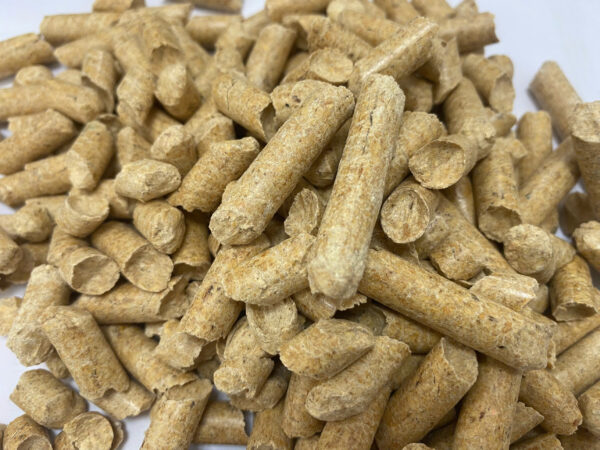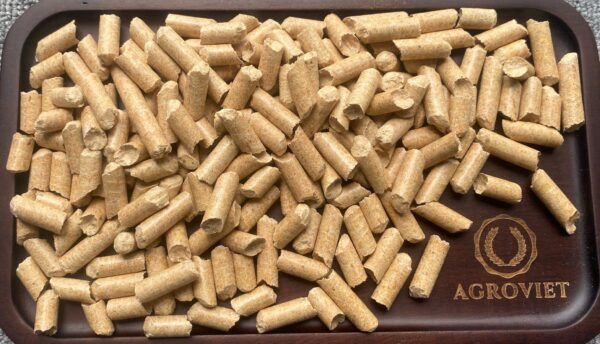Choosing the right bedding for your pet can be tricky, especially if you or your pet suffer from allergies. Many traditional bedding materials, such as straw, hay, or shredded paper, can harbor dust, allergens, and other irritants that can cause allergic reactions. Fortunately, pine wood pellets offer a fantastic alternative. Their natural composition and low-dust properties make them a great choice for allergy-prone pets and owners alike.

In this article, we’ll explore why pine wood pellets are considered allergy-friendly, how they work to reduce allergens, and why they could be the best choice for your pet’s bedding needs.
1. What Makes Bedding Allergy-Friendly?
Allergy-friendly pet bedding is designed to minimize exposure to common allergens like dust, mites, mold, and other particles that can trigger allergic reactions. For pets and their owners, avoiding these irritants can help improve the overall comfort and health of the home.
Allergy-friendly bedding should have the following qualities:
- Low Dust Levels: Bedding that is free from excessive dust is less likely to irritate the respiratory systems of both pets and owners.
- Natural Ingredients: Bedding made from natural materials, like pine wood pellets, is less likely to contain artificial additives or chemicals that can trigger allergies.
- Moisture Absorption: Bedding that efficiently absorbs moisture helps to prevent mold and bacterial growth, reducing the risk of allergic reactions.
Pine wood pellets check all of these boxes, making them an excellent choice for an allergy-friendly environment.
2. Why Pine Wood Pellets Are a Great Choice for Allergy-Friendly Pet Bedding
Pine wood pellets are made from compressed sawdust, a byproduct of the lumber industry. They undergo a heat treatment process that eliminates any pests, mold, or bacteria that may have been present in the raw materials. This results in clean, dust-free bedding that offers a host of benefits for allergy-prone individuals.
Here’s why pine wood pellets are a great choice for reducing allergens in your pet’s living space:
a. Low Dust Content
One of the main benefits of pine wood pellets is their low dust content. Unlike many other bedding materials that tend to kick up dust during cleaning or when your pet moves around, pine wood pellets remain largely dust-free. This makes them ideal for pets with sensitive respiratory systems, such as rabbits, guinea pigs, or cats, as well as for owners who suffer from allergies or asthma.
b. Naturally Hypoallergenic
Pine wood pellets are naturally hypoallergenic, meaning they are less likely to cause allergic reactions. Pine wood has natural antimicrobial properties that help reduce the presence of bacteria, mold, and mites—common culprits that can trigger allergic reactions in pets and humans alike.
c. Excellent Absorption
One of the key features of pine wood pellets is their excellent absorption capabilities. They can absorb several times their weight in moisture, which helps keep your pet’s environment dry and reduces the likelihood of mold growth. Moist environments can exacerbate allergies by promoting the growth of mold and mildew, so keeping your pet’s bedding dry is crucial for allergy control.
3. How Pine Wood Pellets Reduce Allergens in Your Pet’s Environment
When choosing bedding for an allergy-prone pet or household, it’s important to consider how well the bedding material can manage and reduce allergens. Pine wood pellets excel in this area due to their specific characteristics and how they function within the pet’s habitat.

Here are the ways pine wood pellets help reduce allergens:
a. Dust-Free Nature
As mentioned earlier, pine wood pellets produce minimal dust. Unlike traditional bedding like hay, straw, or shredded paper, pine wood pellets do not easily break down into fine particles. This reduces airborne allergens that can aggravate respiratory conditions.
b. Controlled Odor
Another benefit of pine wood pellets is their natural ability to control odors. Pets with allergies can sometimes be sensitive to strong smells or chemical additives found in synthetic bedding. Pine wood pellets contain natural oils that neutralize odors, keeping the environment fresh without the need for artificial fragrances or chemicals that could trigger allergic reactions.
c. Prevention of Mold and Bacteria Growth
Mold and bacteria thrive in moist environments, which can be problematic for both pets and owners with allergies. Pine wood pellets absorb moisture and break down into sawdust, which prevents liquid from pooling and reduces the risk of mold and bacteria growth. This natural drying effect makes pine wood pellets a healthier choice for pets with sensitive respiratory systems.
4. Allergy-Friendly Benefits for Different Types of Pets
The low-dust, hypoallergenic nature of pine wood pellets makes them an excellent choice for a wide range of pets, from small animals to cats.
a. Small Animals
Small animals, such as rabbits, guinea pigs, and hamsters, often suffer from respiratory issues due to exposure to dusty or moldy bedding. Pine wood pellets are a safer alternative to materials like straw or hay, which can carry dust and allergens. The low-dust nature of pine wood pellets ensures that small animals are not inhaling irritants, which can cause breathing difficulties or worsen existing allergies.
b. Cats
Cats are notorious for being sensitive to their environment, and many cat owners have experienced issues with dusty cat litters. Switching to pine wood pellets can significantly reduce the amount of dust in the air and create a cleaner environment for both the cat and the owner. Additionally, the natural scent of pine can help neutralize litter box odors, making it a win-win for cats with allergies.
c. Birds
Birds are particularly sensitive to dust, and their delicate respiratory systems can easily become irritated by dusty bedding materials. Pine wood pellets offer a dust-free option that keeps bird cages cleaner and reduces the risk of respiratory infections.
5. How to Properly Use Pine Wood Pellets for Allergy Relief
To maximize the allergy-friendly benefits of pine wood pellets, it’s important to use them correctly. Here are a few tips:
a. Prepare the Bedding Correctly
When adding pine wood pellets to your pet’s enclosure or litter box, make sure to spread them out evenly. For small animals, 1-2 inches of bedding is usually sufficient. For cats, you may want to use a thicker layer to increase absorption.
b. Regular Cleaning
Though pine wood pellets are long-lasting and absorbent, regular cleaning is essential to maintaining an allergy-friendly environment. Remove soiled pellets daily and replace them with fresh bedding as needed. This will help minimize the accumulation of allergens.
c. Choose High-Quality Pellets
Not all pine wood pellets are created equal. Be sure to choose pellets that are specifically labeled for pet use, as these are free from chemical additives or treatments that could trigger allergies.
6. Conclusion
When it comes to creating a clean, healthy, and allergy-friendly environment for your pets, pine wood pellets are an excellent choice. Their natural hypoallergenic properties, low dust content, and superior moisture absorption make them ideal for reducing allergens and keeping your pet’s habitat clean and fresh.
Whether you have small animals, cats, or birds, using pine wood pellets as bedding can help alleviate allergy symptoms for both your pets and your household. By opting for this eco-friendly and allergy-conscious bedding material, you can ensure that your pets stay comfortable while also promoting a healthier living space.
Make the switch to pine wood pellets today and experience the benefits of allergy-friendly pet bedding for yourself and your furry (or feathered) friends.
